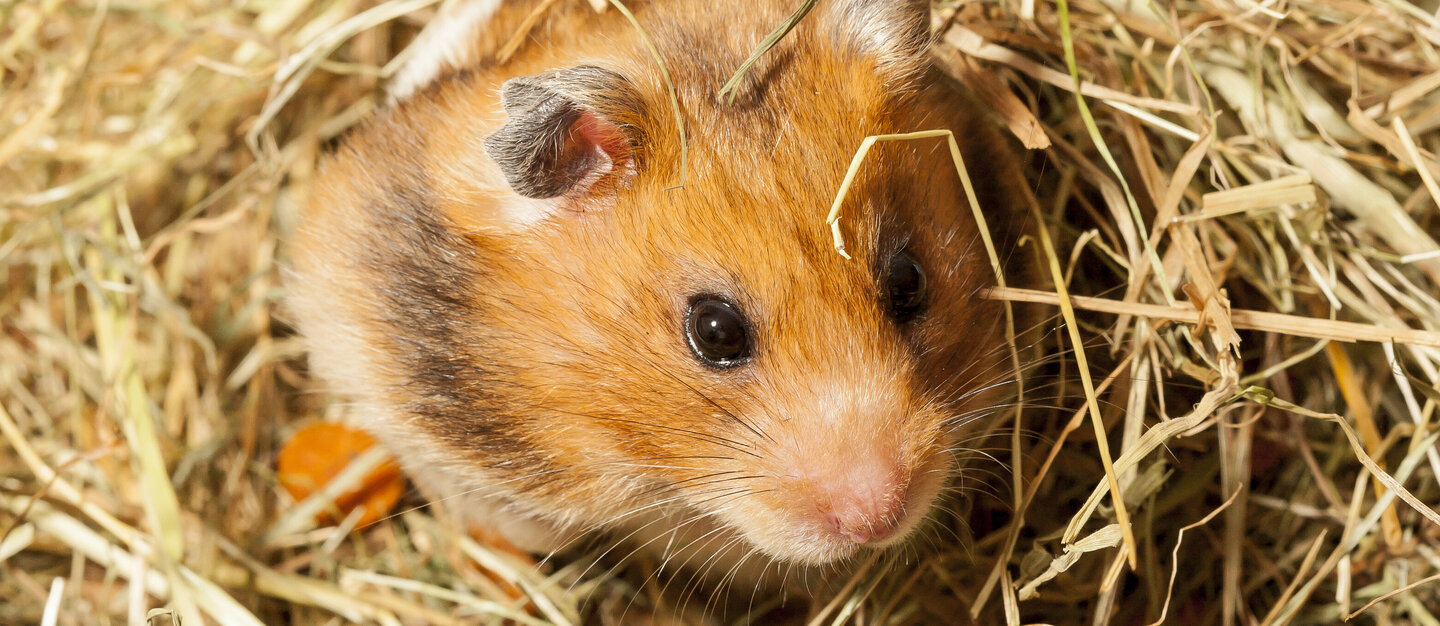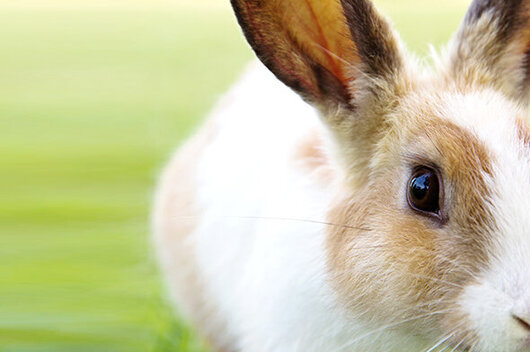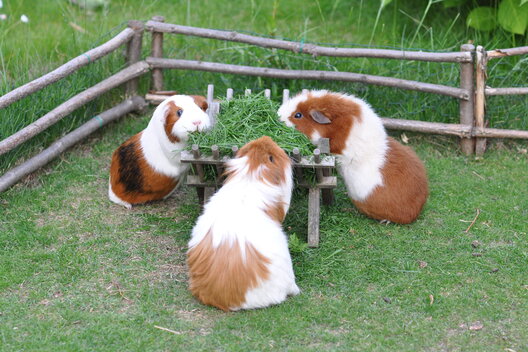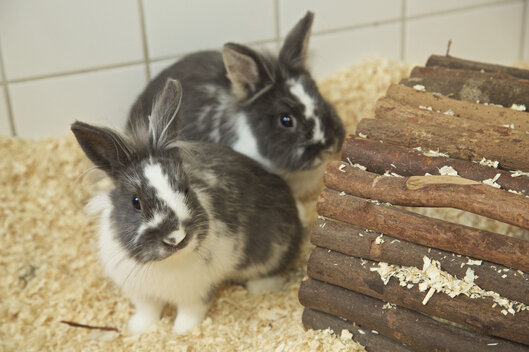Golden hamsters as pets: life expectancy and needsWhat you should know about keeping golden hamsters
Golden hamsters are nocturnal loners and like to be kept busy. If you are thinking of adopting a golden hamster, you should know and meet its needs. Here we explain what these little rodents need to feel at home.
With their fluffy fur, big beady eyes and cute appearance, golden hamsters delight children and adults alike. Golden hamsters have a reputation for being easy to care for and are therefore suitable as starter pets for inexperienced pet owners. However, their small stature and short life expectancy do not automatically mean that they are suitable pets for everyone. Their species-appropriate husbandry is not quite as undemanding as many people assume. Golden hamsters need a lot of exercise and are nocturnal, so they are not suitable for a child's room. If you want to offer a golden hamster a nice home, it is best to consider the following points regarding equipment, handling and food.
Profile golden hamster
- Life expectancy: Golden hamsters have a life expectancy of two to three years.
- Origin: The golden hamster originally comes from northern Syria and southern Turkey. Its main habitat is the Aleppo plateau. There it lives in tube-like burrows that are up to nine meters long and can be over one meter deep underground.
- Weight: An adult golden hamster weighs between 80 and 160 grams.
- Gestation period: Golden hamsters are pregnant for 16 to 18 days. Females can give birth to ten litters per year with seven to 14 young.
- Food: For a balanced diet, golden hamsters need animal protein as well as grains, seeds, green food and vegetables.
- Lifestyle: Golden hamsters are strictly solitary animals and sleep for most of the day. At night they become active and move around a lot, for example in a running wheel.
Golden hamsters are loners
Golden hamsters prefer to live alone, as they are real loners. Therefore, you cannot keep them in pairs. Young animals should not move into a new home until they are 30 days old. In their main natural habitat in northern Syria, hamsters also avoid each other. They only accept partners in their vicinity for mating, after which they separate again immediately.
How old golden hamsters live
The life expectancy of golden hamsters is two to three years. After just three quarters of a year, the animals are real seniors and become noticeably calmer. The early death of these beloved rodents with their golden fur can be very stressful for children.
Enclosure: the bigger, the better
Even small animals have big demands. Golden hamsters are very active and therefore need more space than most people think. Commercially available cages for hamsters are generally far too small for keeping them in a species-appropriate environment. Special enclosures that have a floor area of at least one square meter, allow a high layer of bedding and are at least 70 centimeters high are suitable as a hamster home. It should also contain several levels that are connected to each other so that the animals can climb from floor to floor. Provide your animal with bedding that is at least 30 centimetres high so that it can dig, burrow and create underground tunnels as it pleases.
Golden hamsters are nocturnal rodents with an urge to move around
Golden hamsters sleep during the day, but wake up in the evening. A golden hamster is therefore not suitable for children who want to spend time with an animal companion during the day. Hamsters need a sleeping house with several chambers and a removable roof for their retreat. A toilet and a sand bath for grooming are also required. The nocturnal rodents run a lot - a running wheel is necessary so that they can move sufficiently. This is the only way a privately kept hamster can cover the distance that its free-living relatives cover in search of food. In the wheels, golden hamsters cover a distance of more than 18 kilometers at night. Very stable wheels or wheels that are attached to the cage wall are best. The running surface and one side surface must be closed, as the animal can easily injure itself on individual bars. The wheel should not be made of plastic and should have a diameter of 25 to 30 centimeters.
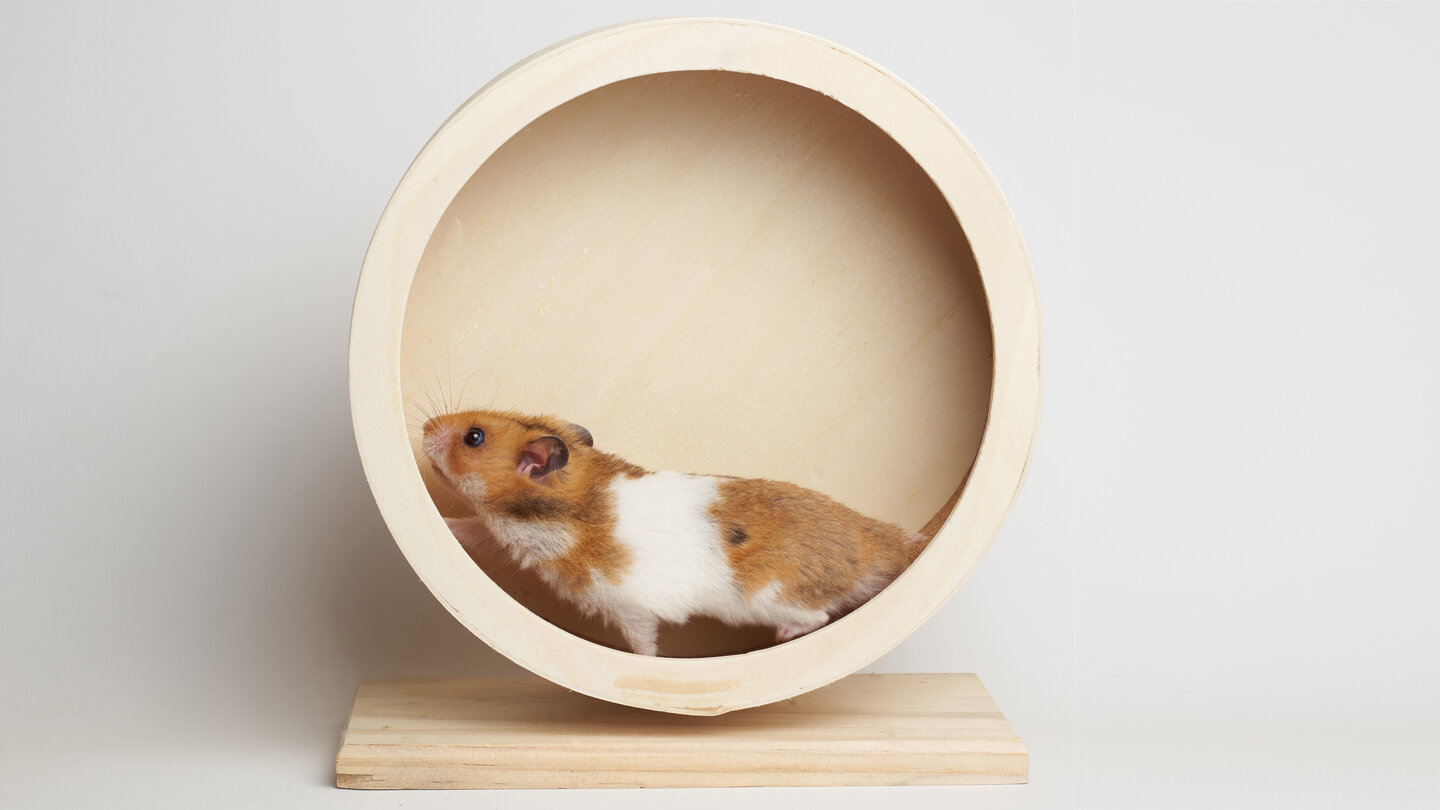
How much does a golden hamster cost?The examples are minimum costs and a rough estimate*
Purchase price for an animal

e.g. for indoor enclosures, bowls, houses, tunnels, digging box, sand bath etc.

for feed, hay, bedding, health checks etc.

e.g. visits to the vet, medication etc.
Handling: Please do not cuddle
Golden hamsters are sensitive and vulnerable creatures. Despite well-intentioned animal love, they are not for cuddling. They do not value human closeness and do not want to be touched or carried around. If your pet needs to be picked up for a visit to the vet, for example, you should gently form a kind of cave with your hands.
WHAT GOLDEN HAMSTERS EAT
Grains and seeds are among the staple foods of golden hamsters. Appropriate food mixtures are available commercially. These should consist of various types of grain, seeds, dried vegetables and oats or other cereal flakes and should not contain any sugar. Ideally, the protein content should be 15 to 20 percent. The fat content should not exceed five percent. Their diet should also include animal protein three times a week in the form of cottage cheese, hard-boiled egg whites or low-fat quark. Golden hamsters also need fresh green food, vegetables and a little fruit for a balanced diet. You should always wash the fresh food beforehand or buy it in organic quality, as hamsters are sensitive to pesticides and other toxins.
Feeding time for nocturnal hamsters is in the late afternoon or evening. Don't just put the food in the bowl, but also distribute it freely around the enclosure - this way you can keep your pet busy. However, he will pick out his favorite parts of the grain food first. To ensure that he eats the rest of the food, you should not give him too much at once. It's best to offer just enough so that he doesn't eat it all at once. This will leave a small amount for him to "hoard" and store. However, hoarded fresh food must be removed before it withers and goes bad. Fresh drinking water must always be freely available.

